
SIGNPOST AT LONGBYEAREN AIRPORT; AQUAVIT; WALRUSES IN ISFJORD, SVALBARD
INTRODUCTION TO NORWAY
Quiet for a thousand years since the marauding days of the Vikings, Norway often seems remote to outsiders, even mysterious – remarkable given its geographical position close to the heart of Europe. Beyond Oslo and the famous fjords, the rest of the country might as well be blank on the map for all many visitors know. Yet it’s out of the cities and off the major roadways that you’ll experience Norway at its most magical: vast stretches of serene, postcard-perfect landscapes where it is at times possible to travel for hours without seeing a single soul. There is nothing tame – and precious little tamed – in this wilderness where everything is on a grand scale, from the deep, blue-black fjords and rearing snowy peaks to jagged forested hills and seemingly limitless expanse of Arctic tundra.
Norway stretches north in a long, slender band from the Skagerrak, the choppy channel that separates the country from Denmark, its coastline battered and buffeted by the Atlantic as it juts up towards the Arctic Sea. Behind this rough and rocky coast are spectacular mountain ranges, harsh upland plateaux, plunging river valleys, rippling glaciers, deep forests and mighty fjords of unsurmounted beauty – an exhilarating landscape begging to be explored by car, boat or bike, on skis or even husky-drawn sled. Perhaps inevitably, the fjords are the apple of the tourist industry’s eye – with the infrastructure to prove it – though when well-heeled English and German gentlemen travellers arrived here in the late nineteenth century on the hunt for the Scandinavian exotic, Norwegians were so poor that you could hire a gillie or two for next to nothing. It is this stark contrast – between a severely impoverished past and an astoundingly wealthy present – that, for locals at least, remains a salient characteristic of life up here. Since the country happened upon vast oil and gas reserves under the Norwegian Sea in the 1960s, Norway has managed to assemble one of the most civilized, educated and tolerant societies in the world – one that its population maintains a deep loyalty for and pride in.
Norway may have a clutch of attractive, cosmopolitan cities, appealing destinations in their own right, but where the country really shines is not in its urban culture, but rather in the low-key, amiable small-town feel that pervades throughout its settlements. This is not to say that Norway suffers from provincialism – Munch, Ibsen, Grieg and Amundsen, to name but four, were all Norwegians of international importance, to say nothing of the many millions of Norwegian descent today successfully making their way somewhere off in the greater world. But one thing is for certain: every Norwegian you will ever meet will at some point make their way back to this remarkable country, put on a pair of old hiking shoes and head off on foot for yonder mountain, reminding themselves how lucky they are to have one of the world’s most ravishing landscapes right at their back door.
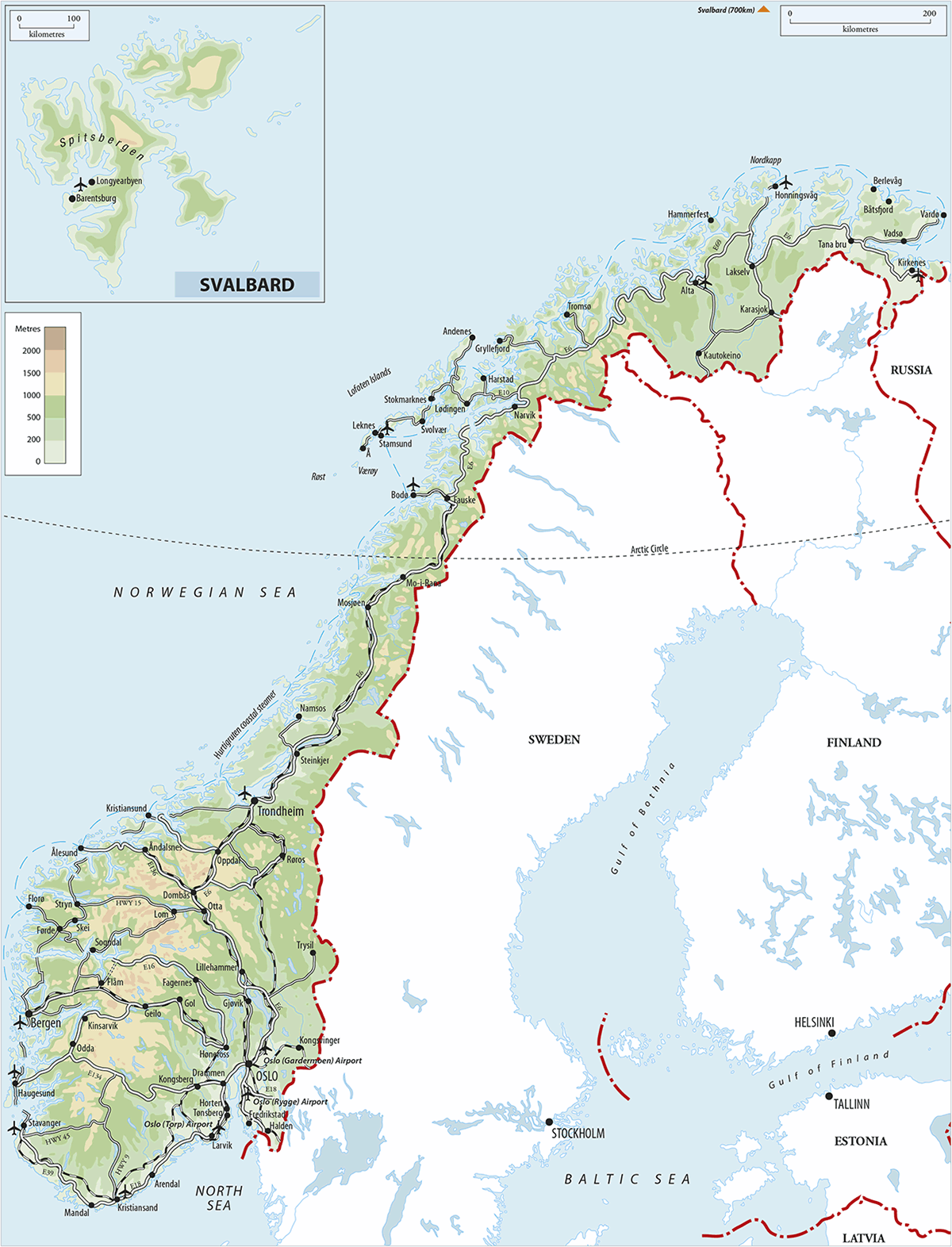
 Zoom top
Zoom top
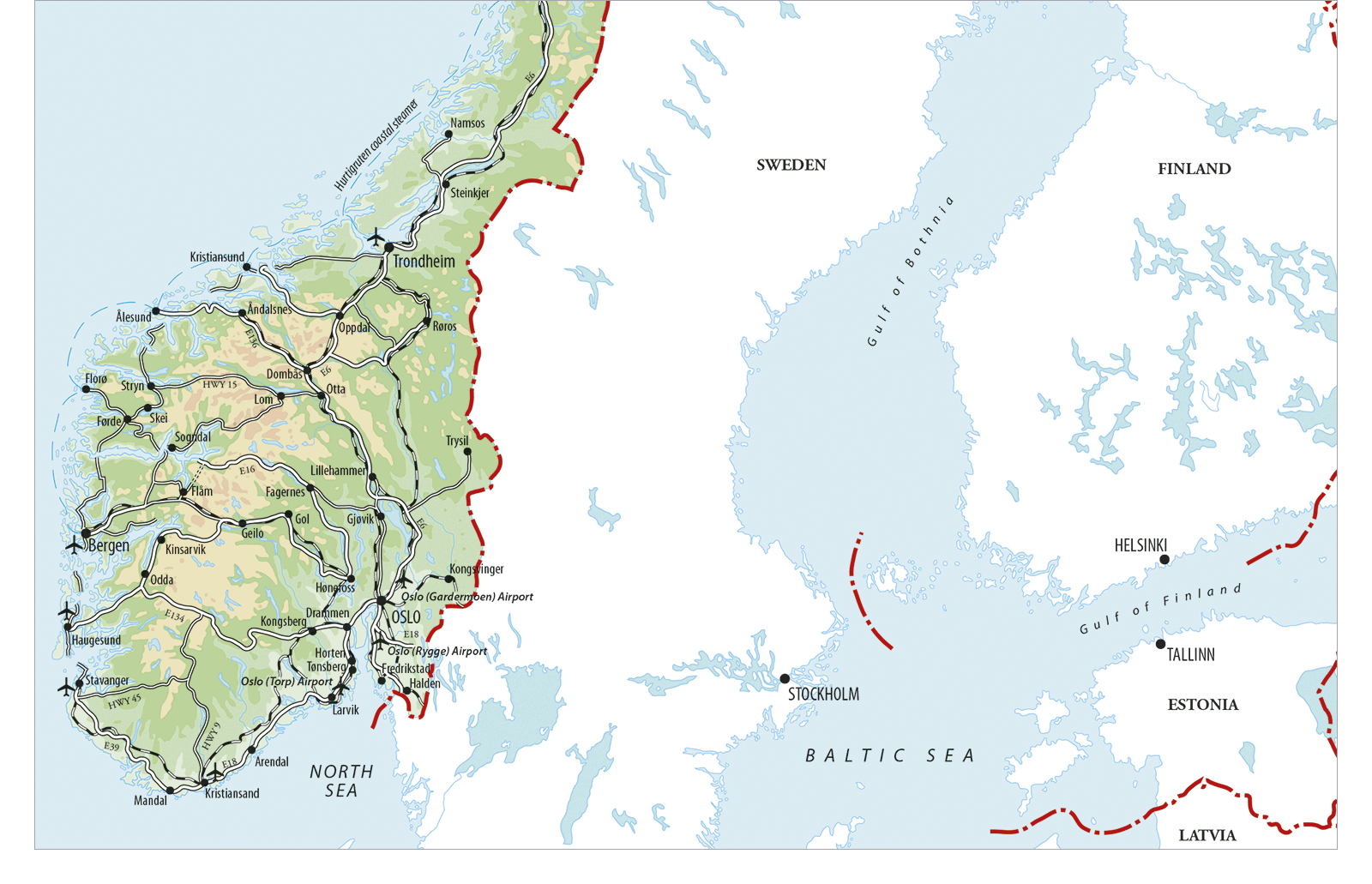
Where to go
Though for the most part its people live in small towns and villages, Norway’s five largest cities are the obvious – and the most popular – initial targets for a visit. They begin with urbane, vivacious Oslo, one of the world’s most prettily sited capitals, with a flourishing café scene and a clutch of outstanding museums. Beyond Oslo, in roughly descending order of interest, are Trondheim, with its superb cathedral and charming, antique centre; the beguiling port of Bergen, gateway to the western fjords; gritty, bustling Stavanger in the southwest; and northern Tromsø. All are likeable, walkable cities worthy of time in themselves, as well as being within comfortable reach of some startlingly handsome scenery. Indeed, each can serve as a starting point for further explorations or as a weekend destination in their own right. And wherever you arrive, the trains, buses and ferries of Norway’s finely tuned public transport system will take you almost anywhere you want to go, although services are curtailed in winter.
Outside of the cities, the perennial draw remains the western fjords – a must, and every bit as scenically stunning as the publicity suggests. Dip into the region from Bergen or Ålesund, both accessible by public transport from Oslo, or take more time to appreciate the subtle charms of the tiny, fjordside villages, among which Balestrand, Lofthus, Loen, Flåm, Ulvik and Mundal are especially appealing. This is great hiking country too, with a network of cairned trails and lodges (maintained by the nationwide hiking association DNT) threading along the valleys and over the hills. However, many of the country’s finest hikes are to be had further inland, within the confines of a trio of marvellous national parks: the Hardangervidda, a vast mountain plateau of lunar-like appearance; the Rondane, with its bulging mountains; and the Jotunheimen, famous for its jagged peaks. Nudging the Skagerrak, the south coast is different again. The climate is more hospitable, the landscape gentler and the coast is sprinkled with hundreds of little islands. Every summer, holidaying Norwegians sail down here to explore every nautical nook and cranny, popping into a string of pretty, pint-sized ports, the most inviting being Arendal and Mandal, the latter the proud possessor of the country’s finest sandy beach.
Hiking remains the most popular summer pastime in Norway, but there are alternatives galore, from whitewater rafting – for example at Sjoa and Voss – sea-kayaking at Flåm, and guided glacier walks on the Jostedalsbreen. In winter, it’s all change when the Norwegians take to cross-country skiing in their droves, shooting off across the Hardangervidda mountain plateau, for example, from Finse, though some prefer Alpine skiing and snowboarding at specialist ski resorts like Geilo and Oslo’s Holmenkollen.
Away to the north, beyond Trondheim, Norway grows increasingly wild and austere – two traits that make it perfect for off-the-beaten-track adventurers – as it humps and lumps across the Arctic Circle on the way to the modern, workaday port of Bodø. From here, ferries shuttle over to the rugged Lofoten islands, which hold some of the most ravishing scenery in the whole of Europe – tiny fishing villages of ochre- and red-painted houses tucked in between the swell of the deep blue sea and the severest of grey-green mountains. Back on the mainland, it’s a long haul north from Bodø to the iron-ore town of Narvik, and on to Tromsø, a delightful little city huddled on an island and with plenty of Arctic charm. These towns are, however, merely the froth of a vast wilderness that extends up to Nordkapp (North Cape), one of the northernmost points of mainland Europe, and the spot where the principal tourist trail peters out. Yet Norway continues east for several hundred kilometres, round to remote Kirkenes near the Russian border, while inland stretches an immense and hostile upland plateau, the Finnmarksvidda, one of the last haunts of the Sámi reindeer-herders. And finally, a short flight away, there is the wondrous chill of Svalbard, rising remote in the Arctic seas, islands of rolling glaciers and ice-glazed mountains where the snowmobile or Zodiac is more useful than a car.
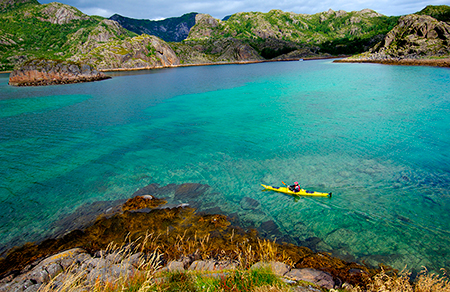
KAYAKING IN THE LOFOTEN ISLANDS
FACT FILE
Norway’s population numbers just under 5 million, of whom 600,000 or so live in Oslo, the capital. Bergen, Norway’s second city, clocks up about 250,000 residents, while around 40,000 indigenous Sámi (Lapps) live mostly in the north of the country.
Norway has a surface area of 386,000 square kilometres, of which half is mountain and a further third forest, lake and river.
Norway is a constitutional monarchy and the present king, Harald V, came to the throne in 1991. The parliament – the Storting – sits in Oslo, but many functions are devolved to a complex network of local authorities.
Forget the seafood – frozen pizza can lay claim to being Norway’s national dish: Norwegians eat over 20 million of them each year.
Norway is not a member of the EU, but has signed up to the EEA (European Economic Agreement) free-trade deal.
The Lutheran Church of Norway is the official state church and over eighty percent of the population belong to it, however nominally. Lutheran jokes are legion: one shipwrecked sailor to another “Don’t worry: I make 50,000kr a week and I tithe; my Lutheran Pastor will find us.”
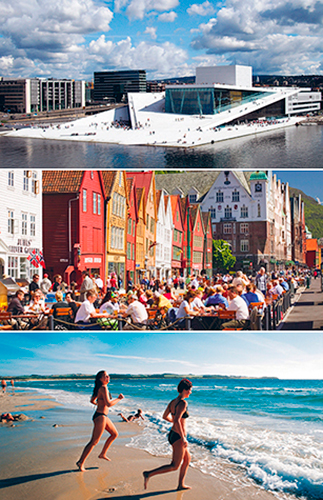
FROM TOP DEN NORSKE OPERAHUSET, OSLO; CAFÉ LIFE, BERGEN; BEACH NEAR STAVANGER
NEW NORWEGIAN CUISINE
Upon tasting a piece of Norwegian flatbread, a Parisian woman in the mid-1800s described it as having “the shape and size of a plate, and the same consistency”. With images of dried mutton, potato dumplings, cabbage stew and lutefisk, Nordic food has rarely been anything to write home about. That all changed in 2010, when Copenhagen’s Noma was named the world’s top restaurant by a panel of 800 chefs and critics, sending the foodie world into shock and turning tastebuds towards Scandinavian kitchens.
Even before this time, though, Norway had begun to reinvent its culinary identity, with new foodie movements, celebrity chefs and a series of government initiatives, such as the Arctic Menu Scheme and Taste of the Coast–aimed at supporting local food producers, preserving local farming traditions and championing the rich heritage of Norwegian ingredients. The country is now in the middle of a kitchen renaissance, returning to its long-standing local food traditions; once again, Norwegians are consulting their grandmothers’ recipe books.
Given nearly 25,000 kilometres of rugged coastline, 150,000 lakes and some of the world’s best angling rivers, it is no surprise that a huge variety of locally caught fish and seafood predominate in Norwegian kitchens. Norway’s diverse landscape also provides habitat to a range of sheep, elk, reindeer and woodland fowl that graze on some of the greenest, most unpolluted grasses in the world, lending their meat a rich, succulent taste. And the country’s temperate summers allow plants to ripen at a slower pace than elsewhere, infusing fruits and vegetables with a supple flavour that you can taste the instant they hit your tastebuds.
When to go
In the popular imagination, Norway is commonly regarded as remote and cold – spectacular but climatically inhospitable. There is some truth in this, of course, but when to go is not, perhaps, as clear-cut a choice as you might imagine with other seasons other than summer offering particular bonuses. There are, for example, advantages to travelling during the long, dark winters with their reduced everything: daylight, opening times and transport services. If you are equipped and hardy enough to reach the north, seeing the phenomenal northern lights (aurora borealis) is a distinct possibility and later, once the days begin to lighten, the skiing – and for that matter the dog-sledging, ice fishing and snowmobiling – is excellent. There are skiing packages to Norway from abroad, but perhaps more appealing – and certainly less expensive – is the ease with which you can arrange a few days’ skiing wherever you happen to be. As the year advances, Easter is the time of the colourful Sámi festivals, and mid-May can be absolutely delightful if your visit coincides with the brief Norwegian spring, though this is difficult to gauge. Springtime is particularly beguiling in the fjords, with a thousand cascading waterfalls fed by the melting snow, and wild flowers in abundance everywhere. Autumn can be exquisite too, with September often bathed in the soft sunshine of an Indian summer, but – especially in the far north – it is frequently cold, often bitterly so, from late September to mid- to late May. Nevertheless, most people travel during the summer season, when bus, ferry and train connections are at their most frequent. This is the time of the midnight sun: the further north you go, the longer the day becomes, until at Nordkapp the sun is continually visible from mid-May to the end of July. Something worth noting, however, is that the summer season in Norway is relatively short, stretching roughly from the beginning of June to the end of August. Come in September and you’ll find that many tourist offices, museums and other sights have cut back their hours and buses, ferries and trains have already switched to reduced schedules.
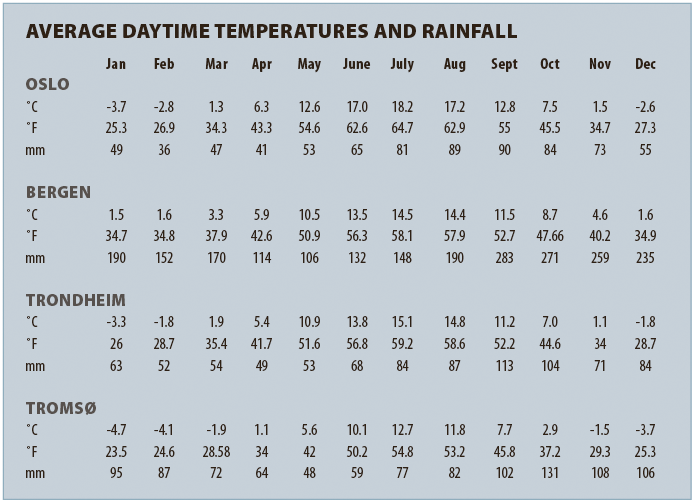
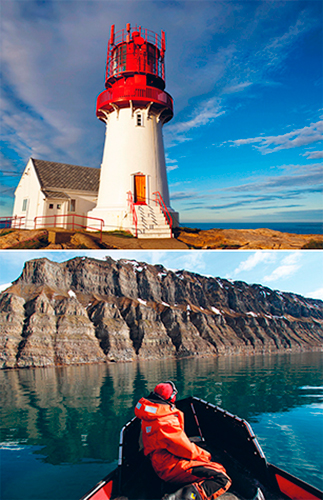
FROM TOP LINDESNES FYR; ISFJORD, SVALBARD
THE MIDNIGHT SUN
The midnight sun is visible at the following places on the following dates, though climbing the nearest hill can – trees and clouds permitting – extend this by a day or two either way:
Bodø: June 2 to July 10
Hammerfest: May 14 to July 28
Longyearbyen April 19 to Aug 23
Nordkapp: May 12 to July 29
Tromsø: May 20 to July 21

FROM LEFT THE TROLLSTIGEN; BORGUND STAVE CHURCH; CROSS-COUNTRY SKIING
AUTHOR PICKS
Our two authors have combed Norway to prepare this new edition. Here are some of their personal favourites:
Mountain roads Not for the faint-hearted, or for the poor-of-steering, Norway’s mountain roads boast some of the most imposing scenery imaginable – the Sognefjellsveg and the Trollstigen are two of the best.
Stave churches If there is one architectural symbol of Norway that stands out, it’s the stave church: ornate and delicate outside; dark, pine-scented and mysterious within. Borgund is the most elegiac , Urnes the wildest and Eidsborg the most idiosyncratic.
Historic hotels Finding a lovely country hotel in Norway is rarely difficult, but three of the best are the expansive Alexandra in Loen , the antique and remote Union Hotel in Øye and the stylish, fin-de-siècle Edvardas Hus on Tranøy.
Great hikes Norway offers the adventurous hiker some wonderful experiences: the hike up from Lofthus to the lunar-like Hardangervidda plateau, the jaunt along the Besseggen ridge in the Jotunheimen Nasjonalpark and the remote, fjord-and-mountain trek from Vinstad to Bunes are three such favourites.
Prettiest villages Not all of Norway’s villages match the beauty of their setting but tiny Mundal, with its pocket of fjordside houses, Ulvik, set ‘twixt fjord and mountain, and quainter than quaint Å, certainly do.
Skiing Blanketed in snow for several months a year, skiing – be it downhill, cross-country or Telemark – in Norway is more a way of life than a sport. Join in, whether it’s on the outskirts of Oslo, in rural Lillehammer, or even up the Lofoten coast setting off from Kabelvåg.
Our author recommendations don’t end
here. We’ve flagged up our favourite places – a perfectly sited hotel, an
atmospheric café, a special restaurant – throughout the guide, highlighted with the
 symbol.
symbol.
24 THINGS NOT TO MISS
It’s not possible to see everything Norway has to offer in one trip – and we don’t suggest you try. What follows is a selective take on the country’s highlights, including outstanding scenery, picturesque villages and dramatic wildlife safaris. Each entry has a reference to take you straight into the Guide, where you can discover more.
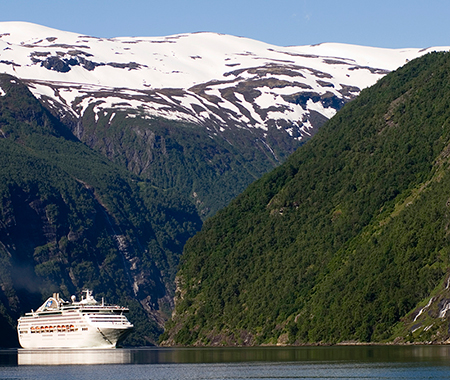
1 Geirangerfjord Shadowed by rearing mountains, the S-shaped Geirangerfjord is one of Norway’s most stunningly beautiful fjords.
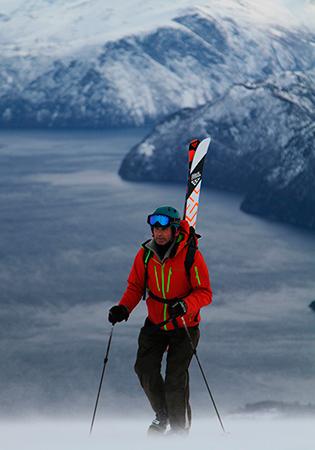
2 Cross-country skiing Norway’s meadows, moors and mountains boast thousands of kilometres of powdered runs just waiting for adventuresome skiers. You might choose to start at Lillehammer.
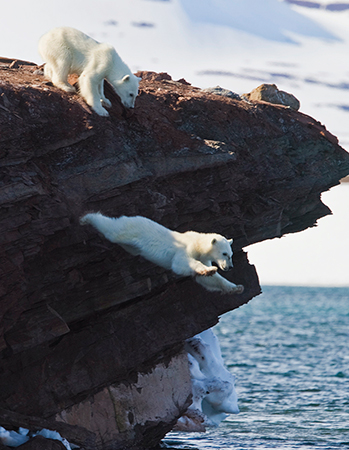
3 Wildlife safaris in Svalbard From polar-bear spotting to birdwatching to husky driving, the vast, glaciated landscapes of this gorgeous Arctic archipelago present a spectacular range of wildlife safaris.
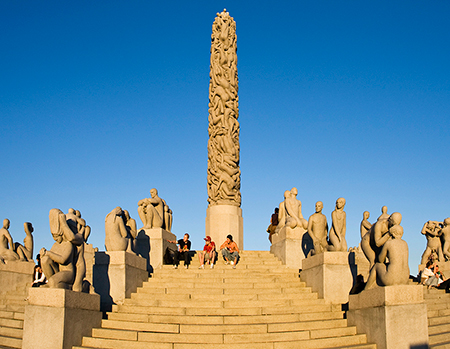
4 Vigelandsparken Before his death in 1943, Gustav Vigeland populated Oslo’s favourite park with his fantastical, phantasmagorical sculptures.
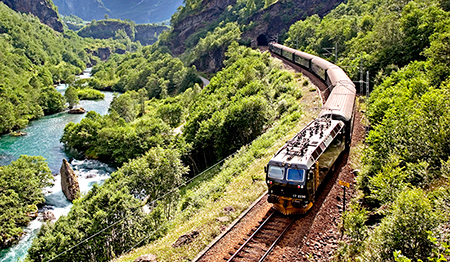
5 The Flåmsbana A ride on the Flåm railway from high up in the mountains to the fjords way down below is one of the most dramatic train journeys in the world.
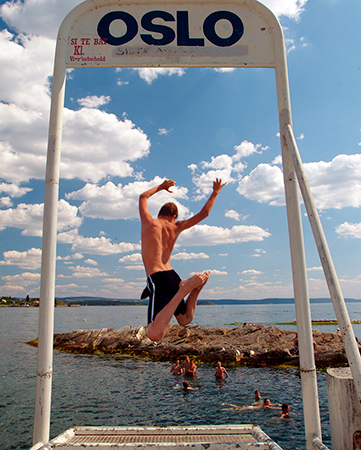
6 The Oslofjord The islands of the Oslofjord are great for swimming, sunbathing and walking – and they are just a short ferry ride from the city centre.
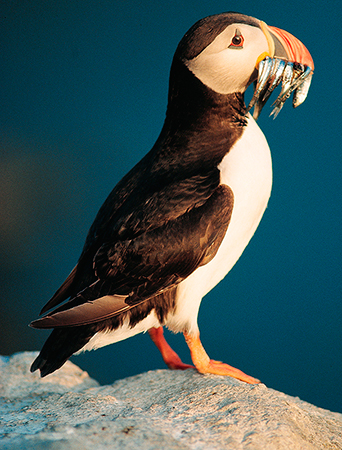
7 Værøy’s sea-bird colonies This remote Lofoten island is renowned for its profuse bird life, which includes puffins, cormorants, kittiwakes, guillemots and rare sea eagles.
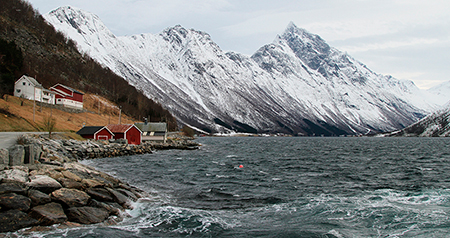
8 Hjørundfjord Wild and windswept, the deep, dark waters and icy peaks of this remote fjord make it one of Norway’s most elegiac.

9 Bergen Norway’s second city is an eminently appealing place with a clutch of fine old buildings, great restaurants and top-notch art galleries.
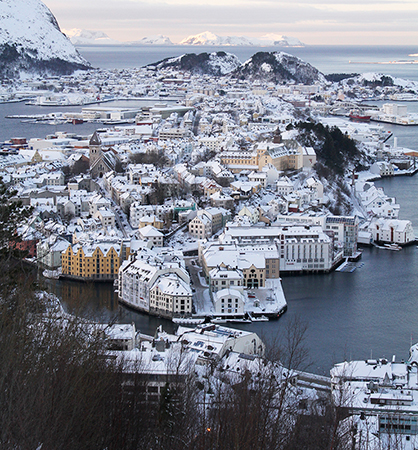
10 Ålesund Nudging the ocean, beguiling Ålesund boasts a wonderful coastal setting and a platoon of handsome Art Nouveau buildings.
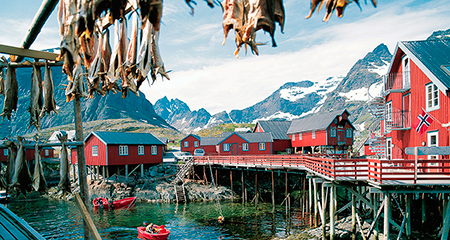
11 The Norsk Fiskevaersmuseum, Å Hanging on for dear life between the mountains and the sea, the tiny village of Å has preserved its nineteenth-century buildings as the Norwegian Fishing Village Museum.
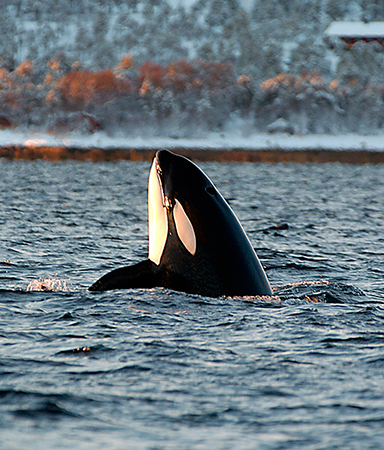
12 Whale-watching, Andenes Pilots, minkes, humpbacks and sperm whales show themselves in all their glory during summertime scouting excursions off the Vesterålen coast.
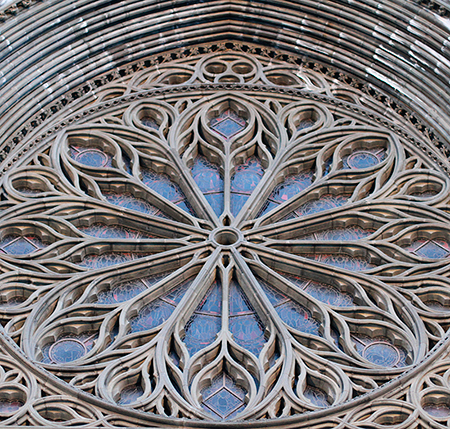
13 Nidaros Domkirke, Trondheim Trondheim’s vaunted gothic domkirke (cathedral) is the largest medieval building in Scandinavia – and one of the world’s most awe-inspiring religious structures.
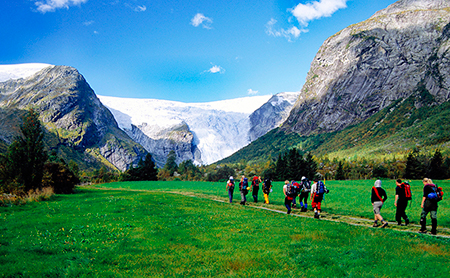
14 The Jostedalsbreen glacier Take a guided walk out on to this mighty ice plateau as it grinds and groans, slips and slithers its way across the mountains behind the Nordfjord.
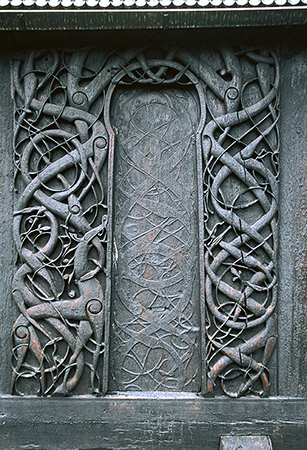
15 Urnes stave church Perhaps the finest of Norway’s stave churches, Urnes is distinguished by the frenzied intricacy of its woodcarving.
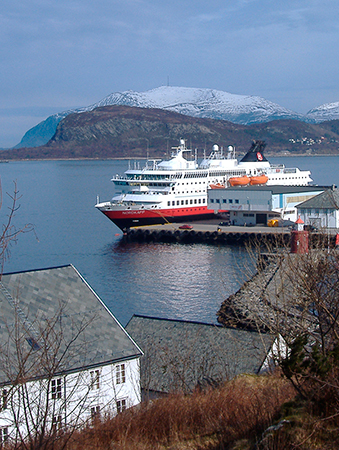
16 The Hurtigruten See Norway in all its scenic splendour on the Hurtiguten coastal boat, which sails north all the way from Bergen to Kirkenes.
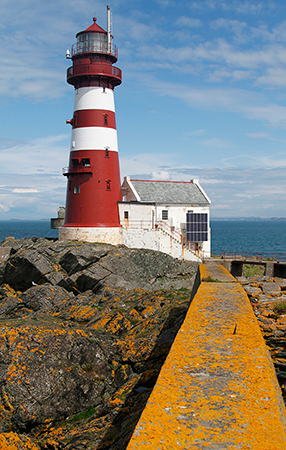
17 Stay in a lighthouse Glued to a storm-battered islet, Feisten Fyr near Stavanger, is one of several lighthouses that make for fabulous places to stay.
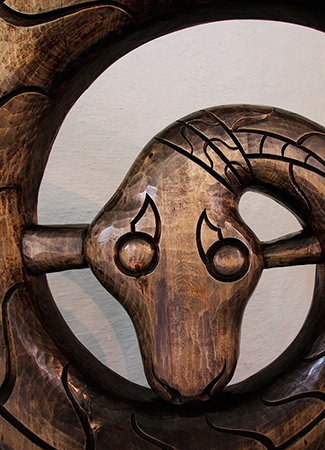
18 The Oseberg longboat Of the handful of Viking longboats that have survived, the Oseberg is the best preserved – and was unearthed complete with a rich treasure-trove of burial goods.
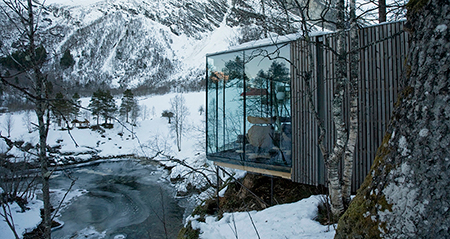
19 Juvet Landscape Hotel Scandinavia’s most enchanting hotel, with freestanding rooms carved out of spruce, is set smack in a verdant river canyon – staying here is like watching an IMAX documentary from your bedroom.
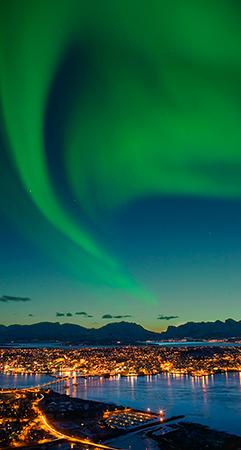
20 The northern lights At once eerily disconcerting and bewitchingly beautiful, the aurora borealis flicker across northern Norway’s winter firmament at irregular, unpredictable intervals.
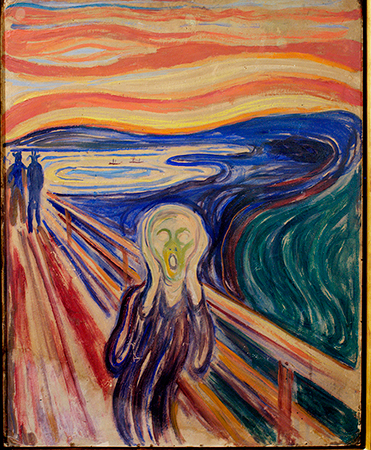
21 Edvard Munch Munch’s unsettling, highly charged paintings appear in several of the country’s museums, most memorably at the Nasjonalgalleriet in Oslo.
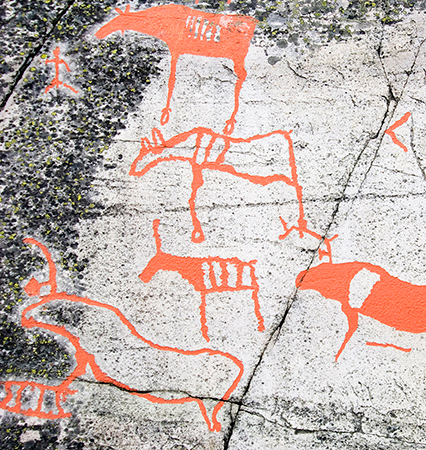
22 Alta rock carvings Simple in design but complex in their symbolism, Alta’s hillside prehistoric rock carvings offer insight into the beliefs of the region’s earliest inhabitants.
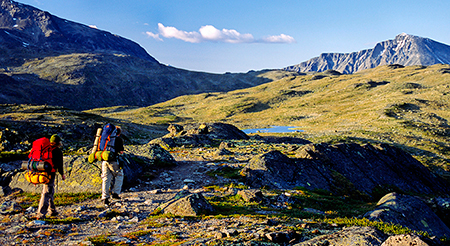
23 Walking in the Jotunheimen mountains One of Norway’s most celebrated hiking areas, the Jotunheimen National Park is crisscrossed with trails and includes northern Europe’s two highest peaks.
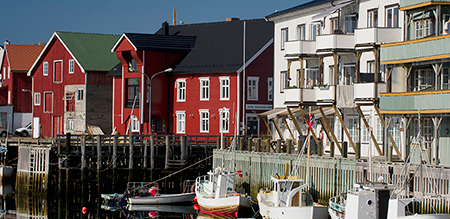
24 Henningsvær The Lofoten islands are strewn about with scores of picture-postcard fishing villages, of which Henningsvær is among the most arresting.

OSLO; LOFTHUS; KIRKENES SNOWHOTEL
ITINERARIES
These three itineraries will give you a taste of Norway’s astounding variety. Our Grand Tour mixes urban charm with stunning scenery while The Western Fjords will help you plan a route through these majestic lands. Real adventure junkies, however, will want to head north to the Arctic wilds for some of the most exhilarating thrills anywhere on Earth.
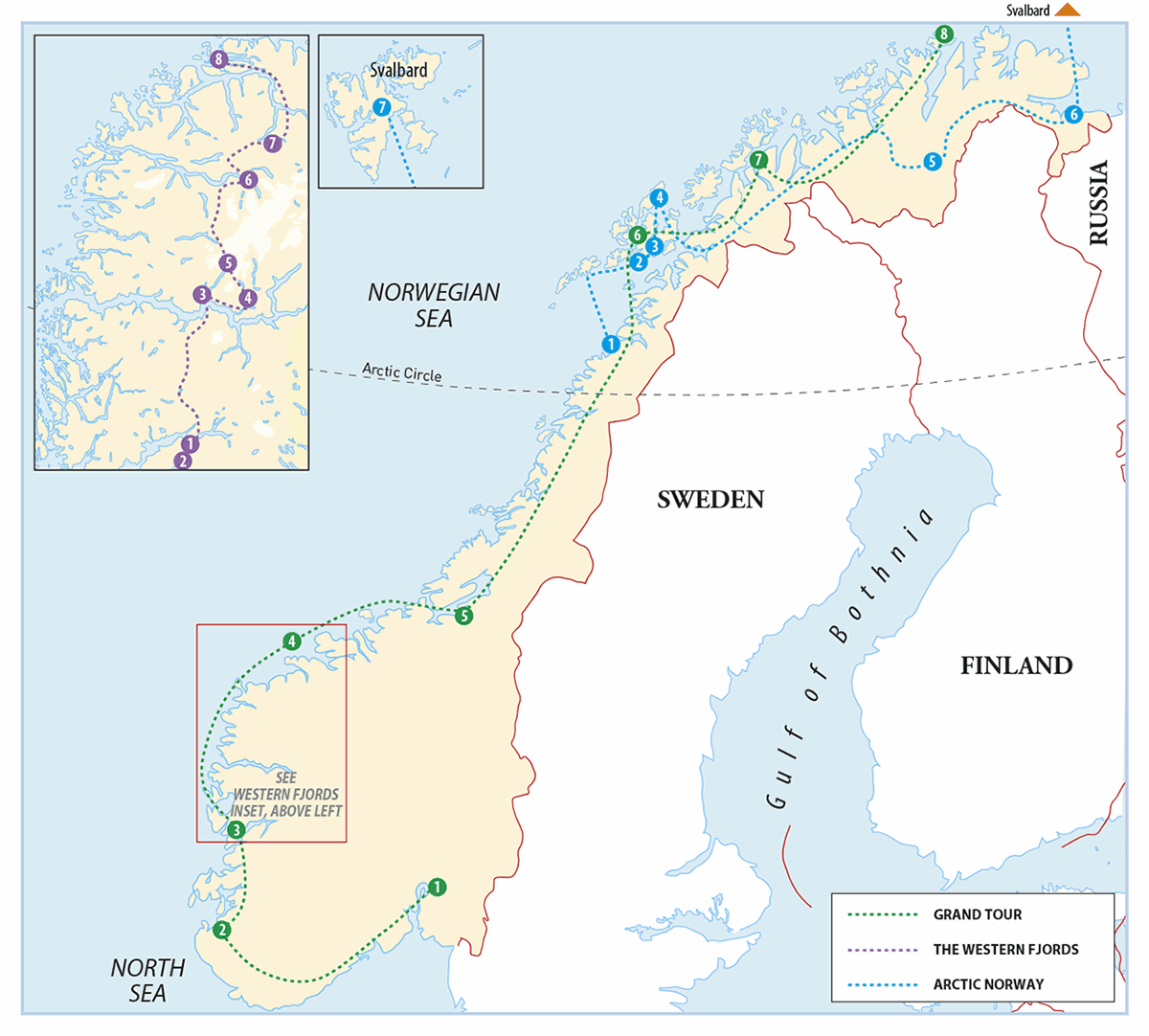
GRAND TOUR
Spend two weeks – though three would be ideal – following the country’s invigorating, surf-battered coast, experiencing its laidback cities and wild landscapes en route.
1 Oslo Allow yourself a few days in the Norwegian capital, taking in its parks, museums, seafood restaurants and bars.
2 Stavanger Stroll the atmospheric old town, visit the canning museum, boat out to an 1800-era lighthouse, then climb up to Pulpit Rock.
3 Bergen This lovely old port is celebrated for its handsome coastal setting and fine wooden architecture. Time your stay to coincide with a festival – Nattjazz, for instance.
4 Bergen to Trondheim by boat No Norwegian holiday would be complete without a sea cruise – sit back and enjoy the views from the Hurtigruten.
5 Trondheim Trondheim features a magnificent cathedral, a charming old district and is a great springboard for points north.
6 Lofoten With its rearing peaks and turbulent ocean, this archipelago is Norway at its most beautiful.
7 Tromsø Home to lively restaurants and simmering bars, this “Paris of the north” is the perfect spot to spend a few days gearing up for an excursion into the Arctic hinterlands.
8 Nordkapp The northern end of mainland Europe, this jagged promontory pokes a knobbly finger out into the Arctic Sea.
THE WESTERN FJORDS
Starting from Bergen, this fjord itinerary will take about ten days – fourteen if you add a hike or two – at a comfortable pace by car, and a little longer by public transport.
1 Lofthus Snuggling the Sørfjord, this lovely little village sits amid fruit orchards – and is within a day’s hike of the Hardangervidda mountain plateau.
2 Trolltunga Hike up to this remarkable overhang – the “Troll’s Tongue” – for a truly incredible view.
3 Balestrand Loveable village with an exquisite setting, its huddle of houses pressing up against the mountains.
4 Solvorn From this quaint hamlet, which ambles up from the Lustrafjord, you can visit the remarkable Urnes stave church.
5 Mundal, Fjærlandsfjord Isolated until the 1980s, the Fjærlandsfjord is gloriously wild. From Mundal you can hike up into the hills to long-abandoned mountain farms.
6 Jostedalsbreen glacier A guided walk on this groaning, creaking glacier, one of the largest in Europe, is a must.
7 Cruise the Geirangerfjord Hemmed in by mountains, this fjord is truly spectacular, and the boat cruise along it a real treat.
8 Ålesund Draped around its pretty, little harbour, this delightful town boasts a confetti of Art Nouveau buildings.
ARCTIC NORWAY
The more northerly stretches of Norway’s beguiling coast beckon with gorgeous indigo light, a distinctly warm camaradarie and limitless outdoor activities – perfect for a couple of weeks’ heart-pounding adventure.
1 Maelstrom in Saltstraumen Experience the world’s strongest tidal whirlpool, which sends some 400 million tonnes of water through the coastline’s narrow fjords, producing an uncanny yelping sound.
2 Cross-country skiing in Kabelvåg Spend a day or two skiing across the powdered marshes and soaring mountains of this up-and-coming destination.
3 Polar Light Center in Laukvik This specially designed centre gets you closest to the elusive northern lights – bright, fiery tapestries of light that flicker across the heavens.
4 Whale-watching in Vesterålen Pilots, minkes and humpbacks seek out Vesterålen’s nutrient-rich waters, turning the region into a hub for scouting excursions.
5 Dog-sledding outside Karasjok Harness, rig, and prep your pack of snow-white Siberian huskies and head off on the Arctic’s Formula 1 – a day-long sledging safari.
6 Sleep in an igloo, Kirkenes Jump into an expedition-strength sleeping bag and drift off to sleep in a room made out of blocks of snow and ice.
7 Explore the ends of the earth on Svalbard Ride the fjords in a rugged Zodiac or snowmobile out to an abandoned satellite station-turned-guesthouse, the perfect base for snowy wilderness exploration.